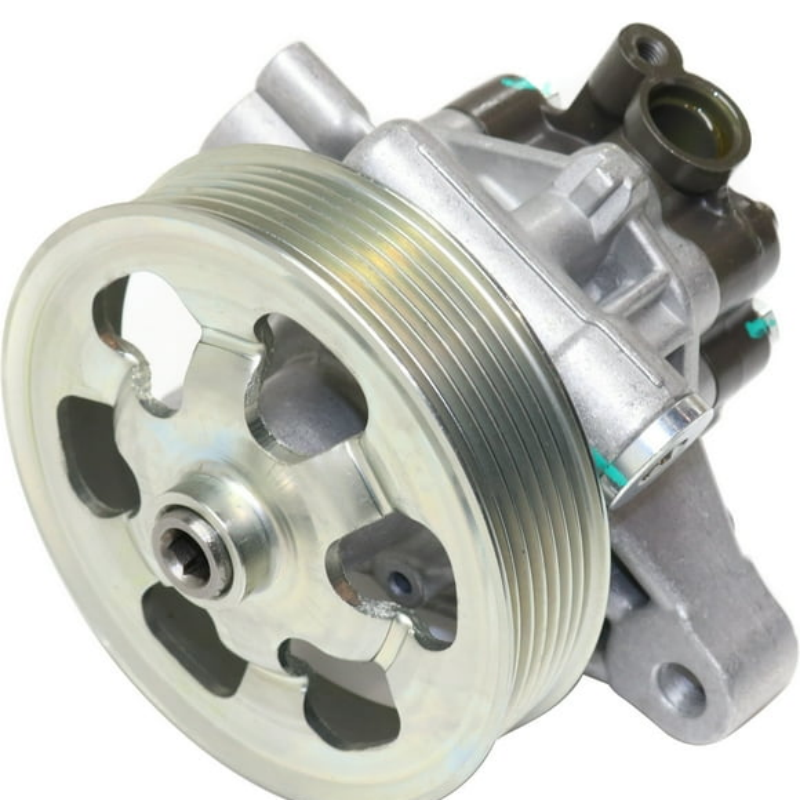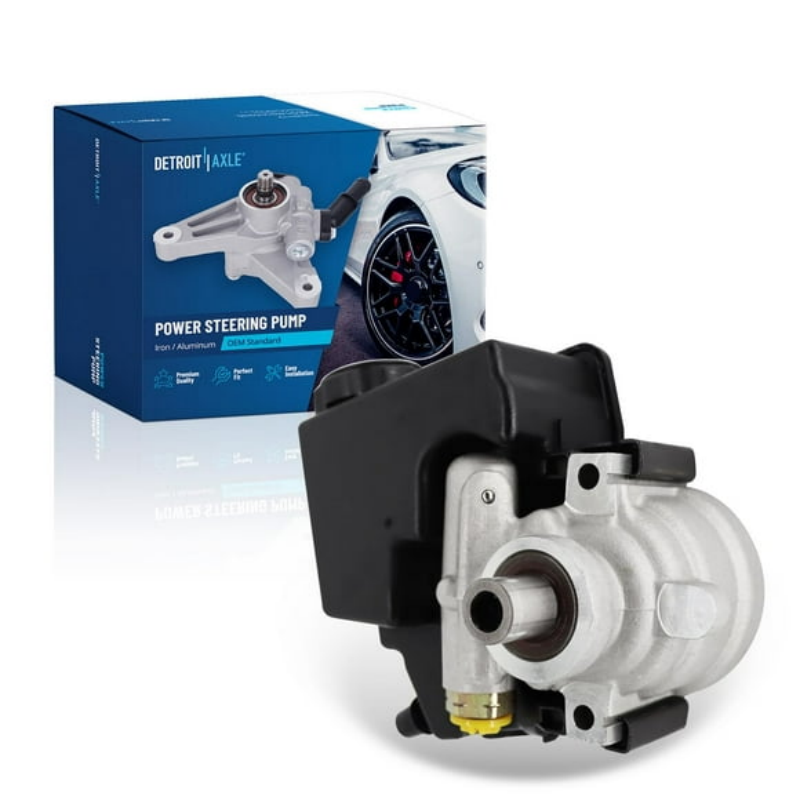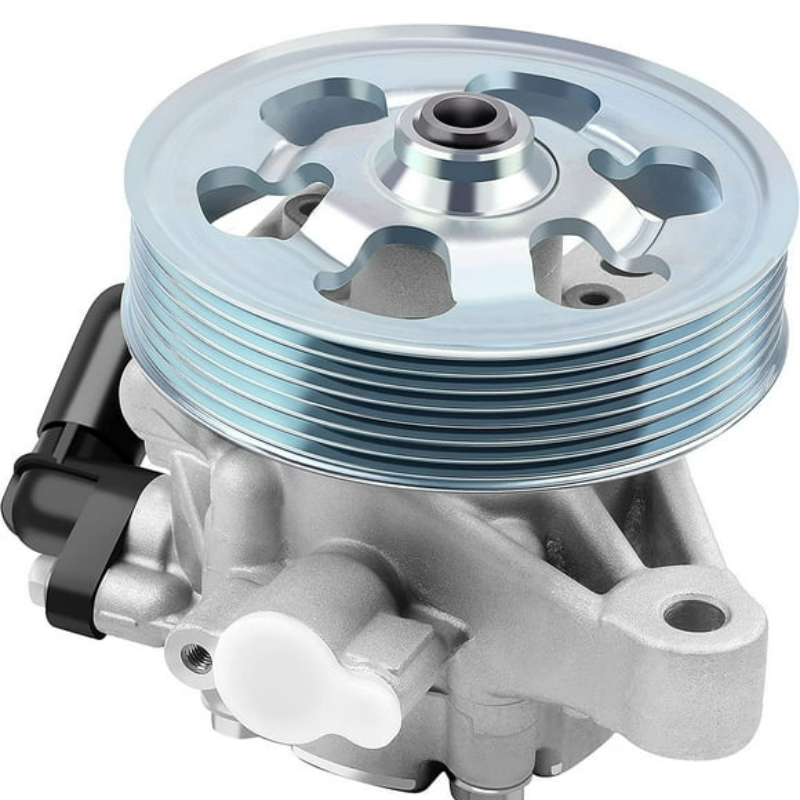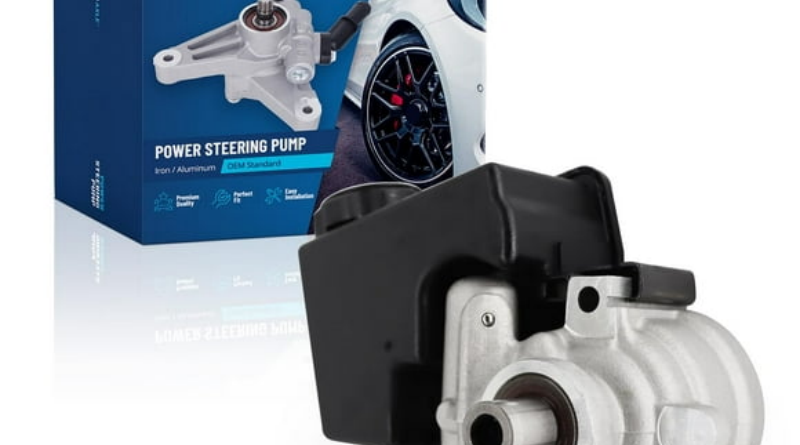How to Remove the Power Steering Pump: A Guide
Removing a power steering pump might seem like a daunting task for most car owners. However, with the right approach and knowledge, it can be tackled with confidence. The power steering pump plays an essential role in the functionality of your vehicle. Specifically, it provides the hydraulic pressure that makes steering effortless. Yet, there may come a time when you need to remove the power steering pump for replacement, repair, or troubleshooting issues related to your steering system. Thus, understanding how to remove the power steering pump not only saves you money on labor costs but also gives you a better grasp of your vehicle’s mechanics. In this guide, we will explore the various steps involved in the removal process, the tools you’ll need, and tips for a successful outcome. By the end of this article, you will feel fully equipped to handle this critical task yourself.

Understanding the Power Steering Pump Function
Before venturing into the removal process, it’s important to familiarize yourself with how the power steering pump functions. The power steering system uses hydraulic pressure to assist in steering. When you turn the steering wheel, the pump sends hydraulic fluid to the steering gear. This process makes it easier to maneuver your vehicle.
One key aspect of the power steering pump’s operation is hydraulic pressure generation. The pump draws fluid from the power steering reservoir and pressurizes it to create the required force. Moreover, fluid circulation plays a crucial role. As the pump operates, it continuously circulates fluid between the reservoir, pump, and the steering gear. This circulation ensures that the system remains lubricated and effective.
In addition, the power steering pump aids in temperature regulation. It helps maintain an optimal temperature for the fluid, allowing it to effectively transfer pressure. Furthermore, regular maintenance is essential. By attending to your power steering system, you can prevent premature wear or failure of the pump.
Consequently, having a solid understanding of the power steering pump’s function can empower you to recognize potential issues and know when removal or replacement is necessary.
Necessary Tools for Removing the Power Steering Pump
Preparing for the task also requires gathering all tools and materials to facilitate an efficient removal process. Having the right tools on hand can minimize frustration and save valuable time. Below is a list of tools you may need:
- Basic Hand Tools:
- Socket set (metric or standard depending on your vehicle)
- Ratchet and extensions
- Wrenches
- Pliers and Screwdrivers: A variety of pliers (needle-nose, channel-lock) along with both flat and Phillips head screwdrivers will be helpful.
- Fluid Catch Basin: Use this to catch any power steering fluid that may spill during the removal.
- Shop Towels or Rags: These are essential for cleaning up spills and keeping your work area tidy.
- Power Steering Fluid: You may want to have some replacement fluid on hand in case you need to top off after reinstallation.
- Replacement Parts: If you intend to replace the pump, ensure you have the appropriate replacement power steering pump available.
- Hose Clamps Removal Tool: Sometimes necessary for easily handling hose clamps connected to the pump.
By gathering these tools before starting the project, you can streamline the process and make the removal task more manageable.
Steps to Remove the Power Steering Pump
Now that you have a solid understanding of the power steering pump and the necessary tools, you can begin the removal process. Follow these detailed steps to successfully remove the power steering pump from your vehicle.
- Safety First: Start the process by ensuring safety. Park your vehicle on a flat surface and engage the parking brake. Also, disconnect the negative battery terminal to prevent any electrical shorts or accidental activation of vehicle systems.
- Locate the Power Steering Pump: Open the hood and locate the power steering pump. Typically, you’ll find it near the front of the engine, attached to the engine block. If unsure, refer to your vehicle’s service manual for specific location details.
- Remove Power Steering Fluid: Using the fluid catch basin, place it under the power steering pump. Next, disconnect the power steering fluid hose from the pump. Depending on your vehicle, this step may require loosening hose clamps. As a result, allow any remaining fluid to drain into the basin.
- Unplug Electrical Connections: If your power steering pump has electrical connections (for instance, an electric pump), carefully disconnect any wiring harnesses or connectors. Make sure to remember where each connection goes for reinstallation.
- Loosen Mounting Bolts: Locate the mounting bolts holding the power steering pump in place. Use your socket set to loosen and remove these bolts. Furthermore, keep them organized for later reinstallation.
- Remove the Pump: Once all bolts are removed, carefully pull the power steering pump away from the engine. Take care not to damage surrounding components as you remove it. If the pump feels stuck, gently wiggle it back and forth to free it without applying excessive force.
- Inspect and Clean: After removing the pump, inspect the mounting area for any signs of damage or debris. Clean the area with a cloth to remove any fluid residue. Doing this creates a fresh surface for the new pump.
- Evaluate the Pump: If you are replacing the pump, check the old pump for signs of wear or damage to determine whether it truly needs replacement. Consider factors such as leaks, strange noises, or difficulty in steering as indicators of pump failure.
By following these clear steps, you will have a reliable roadmap for successfully removing the power steering pump from your vehicle.

Tips for a Successful Power Steering Pump Removal
Removing the power steering pump can be straightforward if you follow some helpful tips. Here are some recommendations to enhance your experience during the removal process:
- Read the Service Manual: Always consult your vehicle’s service manual for manufacturer-specific instructions. Each vehicle may have unique designs or features requiring attention.
- Work in a Well-Lit Area: Ensure you have enough lighting in your working space to see what you are doing. A well-lit environment will help you identify bolts, hoses, and connectors easily.
- Take Photos of Connections: Before you disconnect any hoses or wires, take photos for reference. This can serve as a visual guide during reinstallation, making the process simpler.
- Check for Obstructions: Make sure no other components obstruct your access to the pump. If you encounter difficulties, you may need to remove additional parts to improve access.
- Be Cautious with Fluids: Power steering fluid can be slippery. Use caution while working to avoid accidents or spills in your work area.
- Don’t Rush the Process: Take your time during the removal process. Rushing can lead to mistakes that may damage parts or cause injury while working.
By following these tips, you can ensure a smoother removal process, approaching the task with confidence and precision.
Reinstallation of the Power Steering Pump
Once you’ve removed the power steering pump, you may need to reinstall a new one or reattach the old unit. Here’s how to properly reinstall the pump after removal:
- Prepare the New Pump: If you are installing a new power steering pump, ensure it is compatible with your vehicle. Refer to the specifications in your vehicle’s service manual when selecting a replacement.
- Position the Pump: Carefully align the power steering pump with the mounting points on the engine. Make sure that all hoses and connectors are properly placed to avoid damage during installation.
- Attach the Mounting Bolts: Reinsert the mounting bolts and hand-tighten them first to ensure proper alignment. Afterward, use a socket wrench to tighten them to the manufacturer’s recommended torque specifications.
- Reconnect Hose and Electrical Connections: Reattach the power steering fluid hose to the pump, ensuring that it is secure. If your pump has electrical connectors, plug these back in as well.
- Fill Power Steering Fluid: After the installation, refill the power steering reservoir with new fluid. Consult your vehicle’s manual for the recommended type of fluid to use.
- Bleed the System: To remove trapped air in the power steering system, turn the steering wheel from lock to lock several times while the engine is running. This action helps circulate fluid and expel any air pockets.
- Check for Leaks and Test Drive: After completing the installation, inspect any signs of leaks around the power steering pump and hoses. Finally, take your vehicle for a short drive to ensure proper operation. Monitor for any unusual sounds or steering issues.
Following this reinstallation process will ensure that your power steering pump functions effectively, providing smooth steering and reliability.
Common Issues After Power Steering Pump Removal
After successfully removing and reinstalling the power steering pump, being aware of potential issues is essential. Here are some common problems you might encounter:
- Leaking Power Steering Fluid: If you notice puddles of fluid under your vehicle, this could indicate loose hoses or poorly secured connections. Always double-check to ensure that all connections are secure.
- Unresponsive Steering: If the steering feels stiff or unresponsive after reinstallation, it may indicate trapped air in the system. Ensure you bled the system thoroughly to eliminate any air pockets.
- Noisy Pump Operation: Unusual noises from the power steering pump can suggest low fluid levels or internal wear. If you hear whining or grinding, check the fluid levels and condition.
- Overheating Pump: Excessive heat in the power steering pump can lead to failure. Keep an eye on fluid levels and ensure that there are no obstructions in the cooling system that could affect the pump.
- Dashboard Warning Light: If your vehicle’s dashboard warning light activates, consult the owner’s manual to determine the issue. It may indicate problems with the power steering system or low fluid levels.
By being proactive in monitoring these aspects after removal, you can catch potential issues early and maintain the functionality of your power steering system.

Conclusion
Understanding how to remove the power steering pump empowers vehicle owners to take control of maintenance and repairs. This task, while appearing challenging, can be accomplished with the right knowledge and tools. By following the steps outlined in this guide, you can successfully remove and reinstall a power steering pump.
Along the way, be mindful of checking for signs of issues, maintaining fluid levels, and using the right products. The power steering pump plays a critical role in your vehicle’s performance, making its upkeep essential for safe and smooth driving. Whether you are replacing a faulty pump or simply performing routine maintenance, knowing how to navigate this task will serve you well as a vehicle owner.
Stay informed and prepared, and you will find that handling automotive challenges such as removing the power steering pump can be a rewarding experience. By gaining these skills, you’ll increase your confidence in tackling various automotive tasks in the future.
